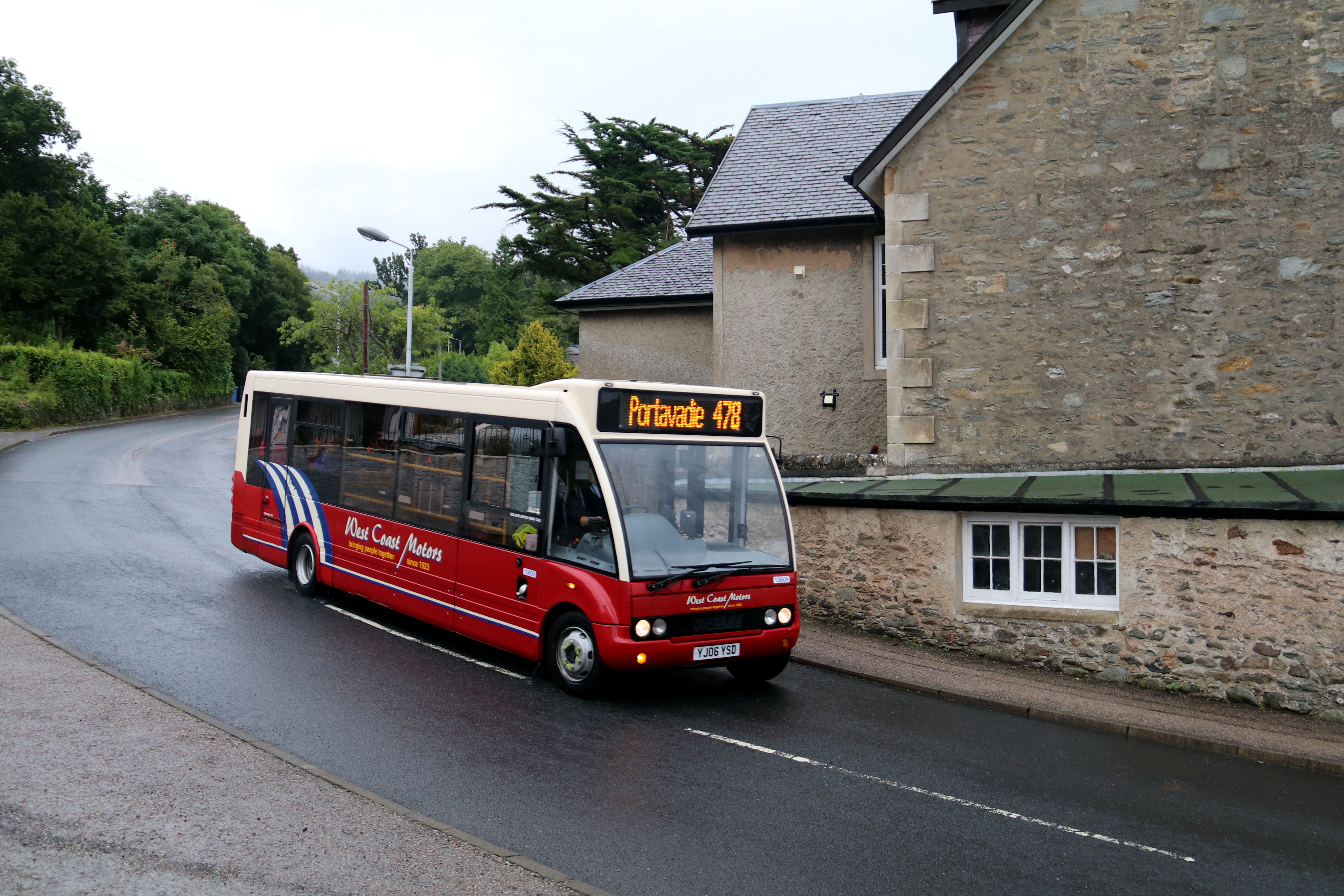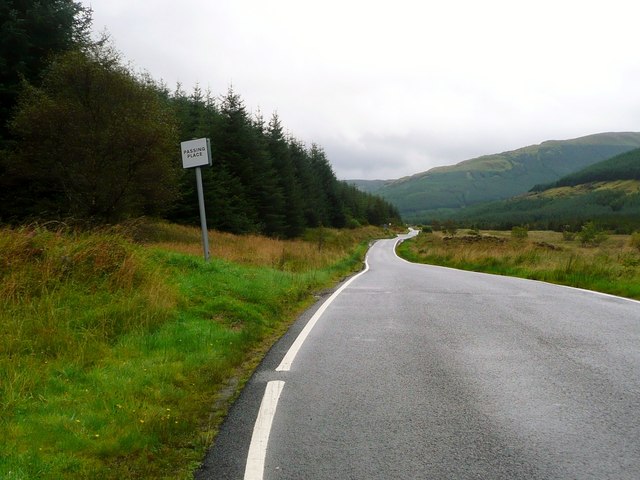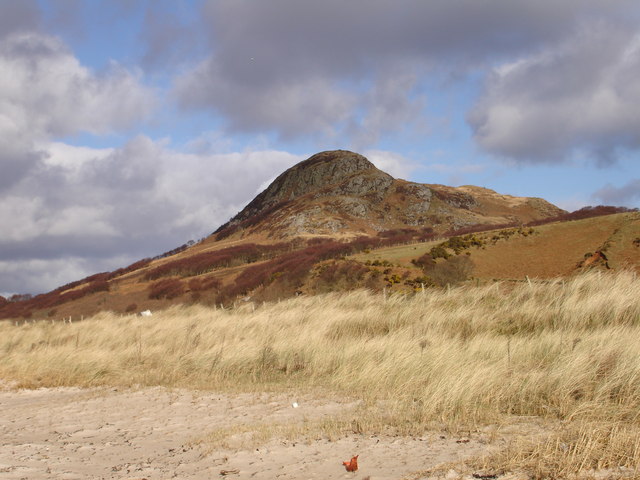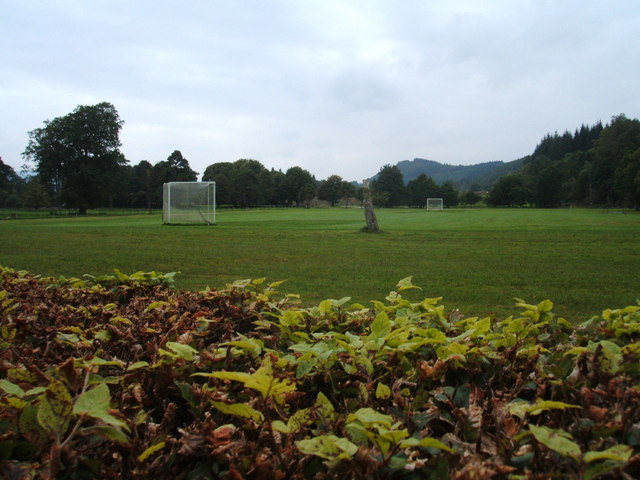|
Tighnabruiach
Tighnabruaich (; ) is a village on the Cowal Peninsula, on the western arm of the Kyles of Bute in Argyll and Bute, west of Scotland. In 2011 the population was 660. It is west of Glasgow and north of the Isle of Arran. Tighnabruaich is now part of a continuous coastal strip of housing that joins onto Kames. Transport Tighnabruaich is on the A8003 road, which is long and travels to the A886 in the east. The A8003 was built in the 1960s. The B8000 the original road, travels down the west coast of the Cowal peninsula from Newton in the north again on the A886, away. The village was more reliant on the sea for the transport of passengers and freight until the completion of the shorter A8003. The village is served by the 478 Dunoon–Portavadie bus, operated by West Coast Motors. History A pier was possibly built in the 1830s by the Castle Steamship Company, a forerunner of Caledonian MacBrayne. It was a stopping place for paddle steamers and Clyde puffers. The wooden pie ... [...More Info...] [...Related Items...] OR: [Wikipedia] [Google] [Baidu] |
478 Dunoon–Portavadie
The 478 is a bus route in Argyll and Bute, Scotland, which runs between Dunoon and Portavadie via Tighnabruiach and Kames. It is operated by West Coast Motors, which was established in 1921. Strathclyde Partnership for Transport inaugurated the route, along with that of the 477 and 479, in October 1993. The route is noted for its long stretches of single-track roads with scattered passing places, especially along the B836 between Sandbank and Auchenbreck, at the junction with the A886 Colintraive–to–Strachur road. The drivers of the 477, 478 and 479 have dubbed their routes the "Bermuda Triangle" due to their complexity and remoteness. Given the distance covered by the route (), it only runs eight times a day, Monday to Saturday (four in the morning and four in the afternoon). The first bus departs Dunoon Pier at 5:48 AM (terminating at Tighnabruiach's Royal an Lochan hotel; the second run is the first to terminate at Portavadie ferry terminal); the last one at 5:30 PM. ... [...More Info...] [...Related Items...] OR: [Wikipedia] [Google] [Baidu] |
PS Waverley
PS ''Waverley'' is the last seagoing passenger-carrying paddle steamer in the world. Built in 1946, she sailed from Craigendoran on the Firth of Clyde to Arrochar on Loch Long until 1973. Bought by the Paddle Steamer Preservation Society (PSPS), she has been restored to her 1947 appearance and now operates passenger excursions around the British coast. Since 2003, ''Waverley'' has been listed in the National Historic Fleet by National Historic Ships UK as "a vessel of pre-eminent national importance". History PS ''Waverley'' is named after Sir Walter Scott's first novel. She was built for the London and North Eastern Railway (LNER) to replace a PS ''Waverley'' that was sunk in 1940 while helping to evacuate troops from Dunkirk. The new vessel was ordered from shipbuilders A. & J. Inglis of Glasgow, who laid the keel at their Pointhouse shipyard on 27 December 1945, Lady Matthews, wife of the Chairman of the LNER, launched the new 693 ton steamer on 2 October 1946. Fittin ... [...More Info...] [...Related Items...] OR: [Wikipedia] [Google] [Baidu] |
Clyde Puffer
The Clyde puffer is a type of small coal-fired and single-masted cargo ship, built mainly on the Forth and Clyde Canal, which provided a vital supply link around the west coast and Hebrides of Scotland. Built between 1856 and 1939, these stumpy little steamboats achieved an almost mythical status thanks largely to the short stories Neil Munro (writer), Neil Munro wrote about the ''Vital Spark'' and her captain Para Handy, which produced three television series. Characteristics Clyde puffers characteristically had bluff bows, crew's quarters with table and cooking stove in the focsle, and a single mast with derrick in front of the large hold. The funnel and ship's wheel stood aft above the engine room, followed by a small captain's cabin in the stern. When publication of the ''Vital Spark'' stories began in 1905 the ship's wheel was still in the open, but later a wheelhouse was added aft of the funnel giving the puffers their distinctive image. Their flat bottom allowed them to ... [...More Info...] [...Related Items...] OR: [Wikipedia] [Google] [Baidu] |
Kintyre Peninsula
Kintyre (, ) is a peninsula in western Scotland, in the southwest of Argyll and Bute. The peninsula stretches about , from the Mull of Kintyre in the south to East and West Loch Tarbert in the north. The region immediately north of Kintyre is known as Knapdale. Kintyre is long and narrow, at no point more than from west coast to east coast, and is less than wide where it connects to Knapdale at the north. Kintyre is the lower Firth of Clyde western coast and protects the Firth from the Atlantic Ocean. The southerly tip of Kintyre is on the North Channel that separates southwestern Scotland from Northern Ireland. The east side of the Kintyre Peninsula is bounded by Kilbrannan Sound, with a number of coastal peaks such as Torr Mor. The central spine of the peninsula is mostly hilly moorland, the highest point being Beinn an Tuirc at . The coastal areas and hinterland, however, are rich and fertile. Kintyre has long been a prized area for settlers, including the early Sco ... [...More Info...] [...Related Items...] OR: [Wikipedia] [Google] [Baidu] |
Tarbert, Kintyre
Tarbert (, ; more fully ''Tairbeart Loch Fìne'' "Tarbert [of] Loch Fyne" to distinguish it from Tarbert, other Tarberts) is a village in the west of Scotland, in the Argyll and Bute council areas of Scotland, council area. It is built at the head of an inlet of Loch Fyne called East Loch Tarbert, Argyll, East Loch Tarbert, on a narrow isthmus which connects Kintyre to the south with Knapdale to the north and separates East Loch Tarbert from the much longer West Loch Tarbert, Argyll, West Loch Tarbert. Tarbert had a recorded population of 1,338 in the United Kingdom Census 2001, 2001 Census. Tarbert has a long history both as a harbour and as a strategic point guarding access to Kintyre and the Inner Hebrides. The name Tarbert is the anglicised form of the Gaelic word ''tairbeart'', which literally translates as "carrying across" and refers to the narrowest strip of land between two bodies of water over which goods or entire boats can be carried (portage). In past times cargoes ... [...More Info...] [...Related Items...] OR: [Wikipedia] [Google] [Baidu] |
Edinburgh
Edinburgh is the capital city of Scotland and one of its 32 Council areas of Scotland, council areas. The city is located in southeast Scotland and is bounded to the north by the Firth of Forth and to the south by the Pentland Hills. Edinburgh had a population of in , making it the List of towns and cities in Scotland by population, second-most populous city in Scotland and the List of cities in the United Kingdom, seventh-most populous in the United Kingdom. The Functional urban area, wider metropolitan area had a population of 912,490 in the same year. Recognised as the capital of Scotland since at least the 15th century, Edinburgh is the seat of the Scottish Government, the Scottish Parliament, the Courts of Scotland, highest courts in Scotland, and the Palace of Holyroodhouse, the official residence of the Monarchy of the United Kingdom, British monarch in Scotland. It is also the annual venue of the General Assembly of the Church of Scotland. The city has long been a cent ... [...More Info...] [...Related Items...] OR: [Wikipedia] [Google] [Baidu] |
Kingussie
Kingussie ( ; ) is a small town in the Badenoch and Strathspey ward of the Highland council area of Scotland. Counties of Scotland, Historically in Inverness-shire, it lies beside the A9 road (Great Britain), A9 road, although the old route of the A9 serves as the town's main street which has been bypassed since 1979. Kingussie is south of Inverness, south of Aviemore, and north of Newtonmore. History The name "Kingussie" comes from the Scottish Gaelic, Gaelic, "Ceann a' Ghiuthsaich" which means "Head of the Pine forest". The ruins of the early 18th-century Ruthven Barracks (Historic Environment Scotland; open to visitors at all times) lie near the original site of the village, which was moved to avoid the flood plain of the River Spey. The Hanoverian Barracks were built on the site of Ruthven Castle, the seat of the John I Comyn, Lord of Badenoch, Comyns, Lord of Badenoch, Lords of Badenoch in the Middle Ages. On 9 January 2025 British big cats#Proven captures and rema ... [...More Info...] [...Related Items...] OR: [Wikipedia] [Google] [Baidu] |
Newtonmore
Newtonmore ( ) is a village of approximately 1100 inhabitants in Badenoch, within the Highland (council area), Highland council area of Scotland. The village is only a few miles from a location that is claimed to be the exact geographical centre of Scotland. Newtonmore is located within the Cairngorms National Park, approximately south-west of Kingussie and south-west of Aviemore. It is on the northeastern bank of the River Spey, between the River Calder, Highland, River Calder and the Allt Lairaidh, at an altitude of approximately . History Newtonmore does not appear on William Roy#The survey of Scotland, William Roy's Survey of Scotland (1747–1752), however some of the surrounding crofts do including ''Bannaker'', now Banchor Mains Farm, on the banks of the Calder. In 1756, a bridge was constructed over the River Spey at the confluence of the River Calder near Ralia, largely replacing the ferry downstream at Ruthven, Badenoch, Ruthven. The road to Kingussie was realign ... [...More Info...] [...Related Items...] OR: [Wikipedia] [Google] [Baidu] |
Camanachd Cup
The Camanachd Association Challenge Cup known as the Camanachd Cup (or less commonly the Scottish Cup) is the premier competition in the sport of shinty. It is one of the five trophies considered to be part of the Grand Slam in the sport of shinty. The tournament The tournament was first played in 1896 with Kingussie beating Glasgow Cowal 2–0 at Needlefield Park, Inverness. At present the tournament is contested by the eligible teams in North and South Division 1 (and from 2014, National Division One), together with the teams in the Premiership, who join the competition at the second round stage. There was formerly a Qualifying Cup. Traditionally, the trophy was competed for on a north–south basis with the best team from the North facing the best team from the South only in the final. In 1983 the open draw was introduced which resulted in the first, and until 2012, only all-South final, between Kyles and Inveraray. 1984 saw the first ever All-North final and first ev ... [...More Info...] [...Related Items...] OR: [Wikipedia] [Google] [Baidu] |
Kyles Athletic
Kyles Athletic Shinty Club is a shinty team from Tighnabruaich, Argyll, Scotland. It is one of the sport's most illustrious names, presently playing in the Marine Harvest Premiership with their second team is playing in South Division one. In 2012 they won the Camanachd Cup for the first time since 1994, defeating local rivals Inveraray in the final. History The club was founded in 1896 as ''Kyles Athletic Football and Shinty Club'', the same year as the first Camanachd Cup, which Kyles have gone on to win more times than any other club apart from the Badenoch giants, Newtonmore, sharing the second place spot with Kingussie, 21 times in all. They have also won the Celtic Society Cup 29 times and the MacAulay Cup a further 10 times. They won the Grand Slam in 1966. (At that point consisting of the Camanachd, MacAulay, Celtic Society and Dunn Senior League.) Kyles play in royal blue shirts with white shorts and red stockings as their first set of jerseys were presented by Ra ... [...More Info...] [...Related Items...] OR: [Wikipedia] [Google] [Baidu] |
Shinty
Shinty () is a team sport played with sticks and a ball. It is played mainly in the Scottish Highlands and among Highland migrants to the major cities of Scotland. The sport was formerly more widespread in Scotland and even played in Northern England into the second half of the 20th century and other areas in the world where Scottish Highlanders migrated. While comparisons are made with hockey, the two games have several important differences. In shinty a player is allowed to play the ball in the air and use both sides of the stick. The latter is called a , which is wooden and slanted on both sides. The stick may also be used to block and to tackle, although a player may not come down on an opponent's stick, a practice called hacking. Players may also tackle using the body as long as it is shoulder to shoulder. The game was derived from the same root as the Irish game of hurling/ camogie and the Welsh game of bando, but has developed unique rules and features. These rules ... [...More Info...] [...Related Items...] OR: [Wikipedia] [Google] [Baidu] |
Atlantic 85-class Lifeboat
The Atlantic 85 is the third generation rigid inflatable boat (RIB), in the B-class series of Inshore lifeboats, operated around the shores of the British Isles and the Channel Islands by the Royal National Lifeboat Institution (RNLI). Developed from the and the later , it was first placed on service in 2005, and has gradually now replaced the older . The Atlantic design of the B-class of lifeboats is named after Atlantic College, where the design was originally developed. Design The hull is constructed in a fibre reinforced composite, consisting of a carbon fibre and foam core laminate with an epoxy glass and foam sandwich layup. The tubes are Hypalon. The boat is powered by twin Yamaha 4-stroke outboard engines that have been inversion-proofed to ensure the engines are still operational after a capsize. Like previous RIBs, it has a manually operated self-righting mechanism that deploys an airbag mounted atop the A-frame. It is capable of being beached in an emergency wit ... [...More Info...] [...Related Items...] OR: [Wikipedia] [Google] [Baidu] |









